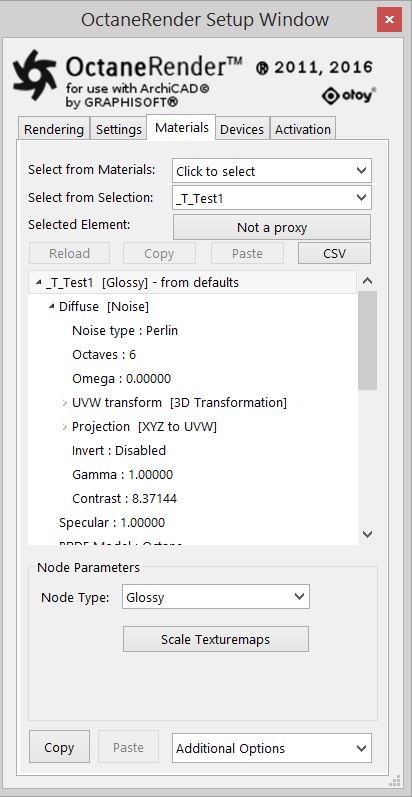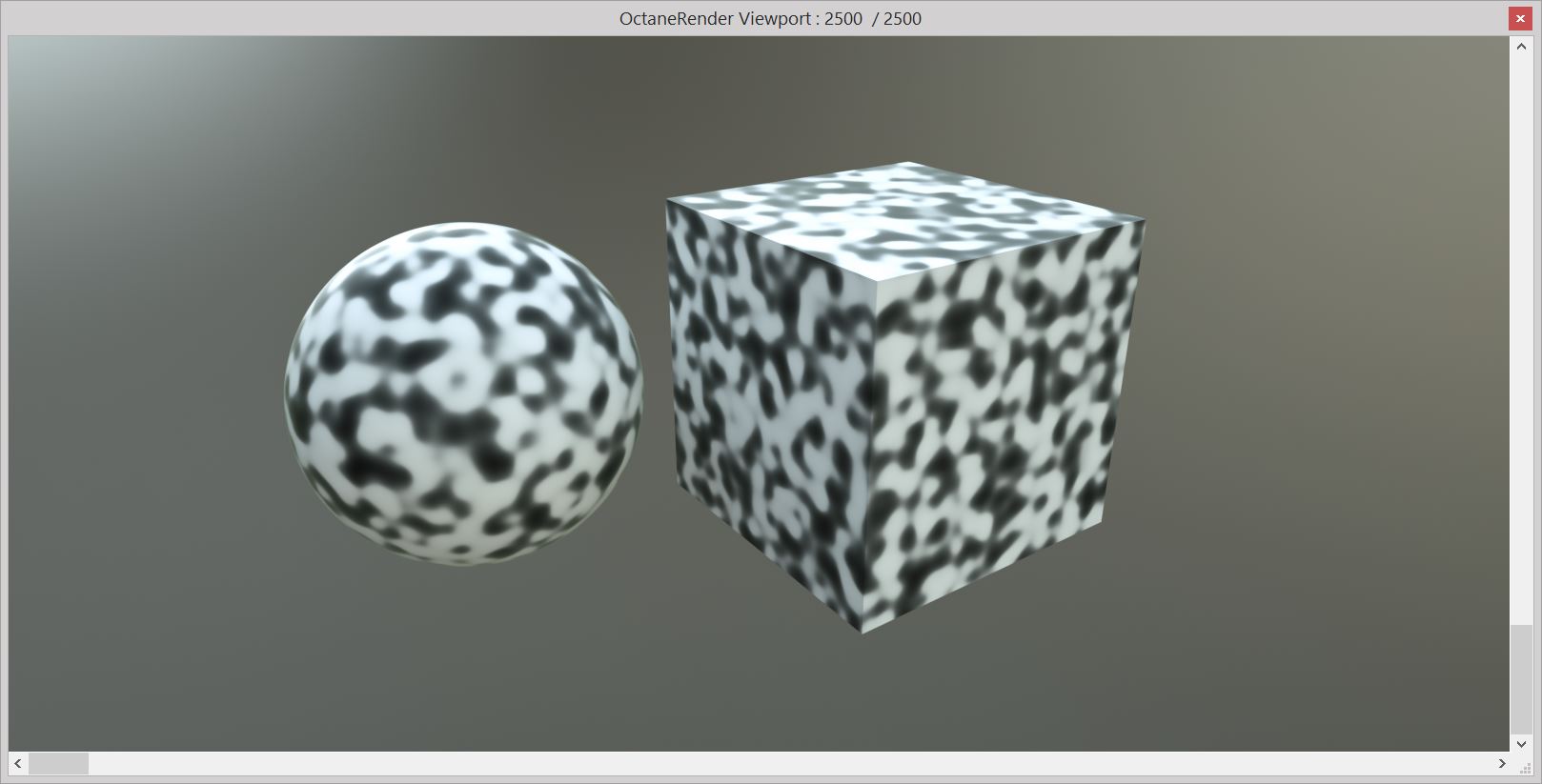
This texture allows you to bake an arbitrary texture into an image and make use of Procedural textures in displacement mapping. The baking uses the texture preview system, and then the texture appears like an image texture to the rest of the system. The baking is done whenever an input changes, and baking is calculated on-the-fly. The internal image is not stored in the project, so it needs recalculating whenever you load the project.
With this Texture node, you can utilize the full power of Procedural textures and combine them with DisplacementThe process of utilizing a 2D texture map to generate 3D surface relief. As opposed to bump and normal mapping, Displacement mapping does not only provide the illusion of depth but it effectively displaces the actual geometric position of points over the textured surface., which makes it easy to create realistic materials.
In OctaneRender®, Displacement cannot utilize a Procedural texture map. This Texture node provides a way to bake Procedural textures into an image to use as a Displacement map.
In the following example, Displacement uses the Noise procedural texture by connecting it to the Baking texture node before connecting it to the Displacement node.
Figure below shows the Noise node used for DiffuseAmount of diffusion, or the reflection of light photons at different angles from an uneven or granular surface. Used for dull, non-reflecting materials or mesh emitters., which in the next step will be used for Baking texture node.


The Figure and Image below shows she Noise node used for Displacement by filtering it through the Baking texture node. The Diffuse is now set to a RGB color.


Tip: You can potentially reduce (the black) artefacts by increasing the "Level of Detail" and by using the "Displacement Direction" and "Filter Type" and "Radius". You will need to experiment but Follow Smoothed Normal might seem best with a Gaussian filter.
The Effects category covers Displacement mapping in more detail.